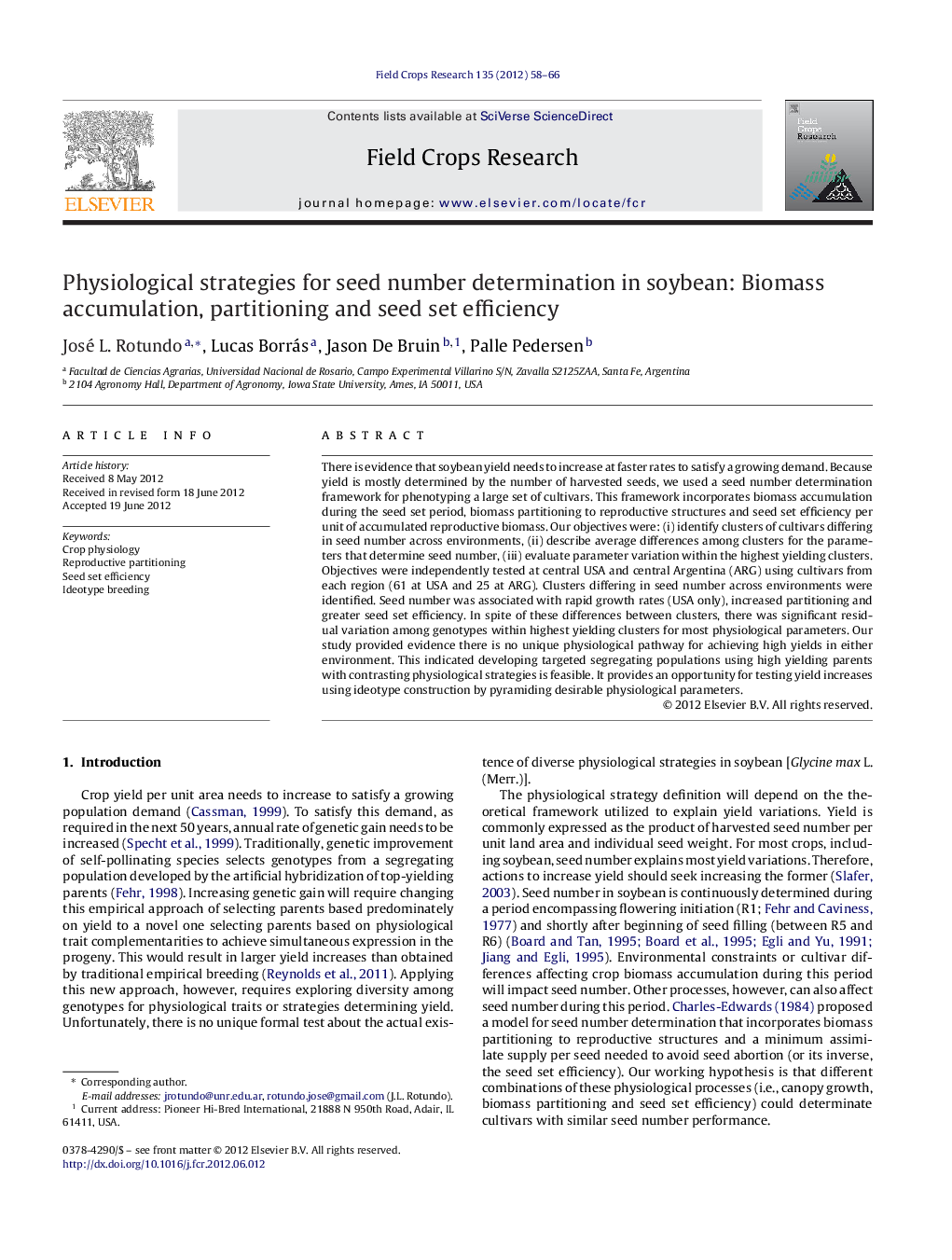| Article ID | Journal | Published Year | Pages | File Type |
|---|---|---|---|---|
| 4510336 | Field Crops Research | 2012 | 9 Pages |
There is evidence that soybean yield needs to increase at faster rates to satisfy a growing demand. Because yield is mostly determined by the number of harvested seeds, we used a seed number determination framework for phenotyping a large set of cultivars. This framework incorporates biomass accumulation during the seed set period, biomass partitioning to reproductive structures and seed set efficiency per unit of accumulated reproductive biomass. Our objectives were: (i) identify clusters of cultivars differing in seed number across environments, (ii) describe average differences among clusters for the parameters that determine seed number, (iii) evaluate parameter variation within the highest yielding clusters. Objectives were independently tested at central USA and central Argentina (ARG) using cultivars from each region (61 at USA and 25 at ARG). Clusters differing in seed number across environments were identified. Seed number was associated with rapid growth rates (USA only), increased partitioning and greater seed set efficiency. In spite of these differences between clusters, there was significant residual variation among genotypes within highest yielding clusters for most physiological parameters. Our study provided evidence there is no unique physiological pathway for achieving high yields in either environment. This indicated developing targeted segregating populations using high yielding parents with contrasting physiological strategies is feasible. It provides an opportunity for testing yield increases using ideotype construction by pyramiding desirable physiological parameters.
► Crop yield is mostly determined by seed number set per unit land area. ► Seed number depends on biomass accumulation, partitioning and set efficiency. ► Ideotype breeding requires diversity knowledge for these physiological traits. ► Elite USA and Argentina soybean cultivars have substantial variation for these traits. ► Our approach allowed selecting parents having contrasting physiological strategies.
